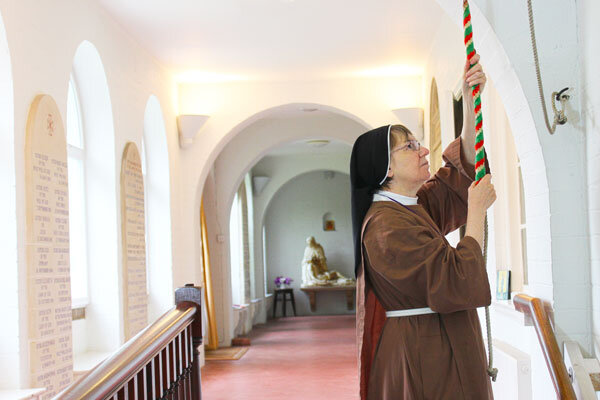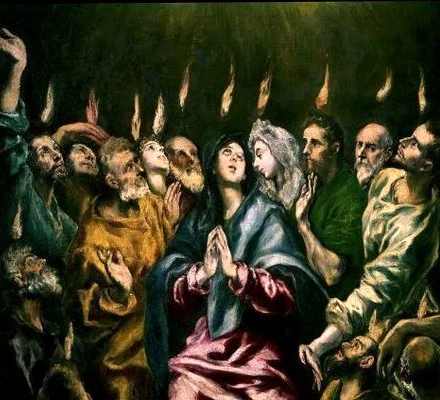Discerning vocation to religious life
After a long summer break, the School of Theology is back with an essay by Sr Judith of the Sisters of the Love of God. Her contribution to our on-going series on Christian vocation is, appropriately enough, about discerning a vocation to a religious life; that is, life as a monk or nun or other member of a religious community.
I have recently been asked to articulate what the difference is between a committed Christian life and the religious life, in the sense of life as a member of a religious community. Clearly religious life is not for all Christians, so what is the distinction? It sounds like a simple question, but actually it is one I have been asking myself for at least the last 35 years and failed to come up with a convincing answer! Each time I try I find myself saying “but that must be true too for all Christians”. I can talk about vows, but every Christian is called to live a chaste, obedient, simple, and sharing life. Whatever I have tried to fix upon to crystallise the difference seems not to stand up to close inspection.
So maybe trying to make a distinction isn’t quite the way to discern what religious life is about. Clearly it isabout living a committed Christian life, but ina particular way. As someone said to me while I was trying to decide whether to proceed to vows “The question is: is religious lifeyourway to make a total commitment to God?”.
Thought about in those terms the answer was “yes”. The vows were something I found giving me both structure and challenge, which is something which continues life-long. I thought about them in terms of magnetising a metal strip as I had done in my science lessons. The physics teacher had made us stroke repeatedly, in one direction only, a strip of metal foil, which we had previously tested to make sure it was not magnetic. After the stroking, hey presto, the strip was attracted to a magnet. She explained that all the atoms in the piece of metal foil had initially been arranged with their magnetic poles randomly aligned. The action of the magnet had induced all the atoms to line up with their magnetic poles in the same direction and then the metal strip acted as a magnet. The vows could act on my life by helping to align it repeatedly towards God and God’s kingdom. The beauty of the image amplified by the fact that the religious life is also something which is done in conjunction with other “atoms”, other people forming community. The vows work on each person in the community, and together we grow to be orientated towards God. The repetition of the “stroking” reminds me that this orientation is not something done once for all but something that needs to be undertaken again and again, minute by minute, day by day because my wayward desires keep me constantly spinning round away from being orientated towards God.
Image taken from the Sisters of the Love of God
At the beginning of the service in which we make our vows we are asked what we desire. And our response is “The Mercy of God and liberty to bind myself to God in this community in a life of prayer and reconciliation to God’s honour and glory”. That may seem a surprising response, surely the constraints of someone making religious vows are anything but liberty. Yet actually it is the vows themselves that create liberty. In a wonderful article entitled Making Commitments first published in Franciscan magazine in January 1995, Rowan Williams relates a Welsh folk tale. A Wizard promises great rewards if someone will only stand in a circle he draws on the ground. John Gethin agrees and stands firm in the circle while terrible sights and monsters appear. Finally, a fiery wheel careers towards him and he dodges to avoid it putting one foot outside the circle. Although the wizard gave him a candle and said if he kept it safe he might be alright, John died within a few weeks and when his family opened the locked box in which he had put the candle, the box was empty. Reading the article made me view vows as the circle within which I have promised to stand. These are the ways of living that will set me free, free from my grasping self, free from the self that longs to evade difficult truths and circumstances, free to listen with all my heart, free to commit to being here for the world and God rather than myself, free to love and free to be here for all. By promising to live within limitations I am paradoxically liberated. It is true too for the vows of marriage, there a person promises to live within thisrelationship, which actually limits them from relationship with others, but it is within that limitation that the person is free to learn and receive love.
There are, as most people know, three basic vows we make in religious life. There is a vow of poverty, which means having all things in common within the community, and taking no more than I actually need. This frees us from the trappings of material wealth and its pursuit. There is also a vow of chastity, which makes us free to be available for the whole world, not exclusively for one person. And there is the vow of obedience, to really listen to the demands of the gospel to re-tune our will to be “one energy with the Will of God” as our Rule on Obedience puts it.
Scene from Into Great Silence (2005)
This suggests another way to think about the liberty of the religious life, as one that transcends ordinary worldly freedoms. In the last talk that Thomas Merton gave to a conference before his death in Bangkok in 1968[1] he talked about liberty though in terms of liberty from illusion thus allowing the religious to touch the heart of reality and doing so in order to liberate the world. He is speaking about a Buddhist image which he explains pertains to the relation of the religious to the world. He uses the word “monk” but means a male or female religious:
The monk belongs to the world, but the world belongs to him insofar as he has dedicated himself totally to liberation from it in order to liberate it…It is the view that if you once penetrate by detachment and purity of heart to the inner secret of the ground of your ordinary experience, you attain to a liberty that nobody can touch, that nobody can affect, that no political change of circumstances can do anything to.
What is essential in the monastic life is not embedded in buildings, is not embedded in clothing, is not necessarily embedded even in a Rule. It is concerned with this business of total inner transformation. All other things serve that end. I am just saying in other words, what Cassian said in the first lecture on puritas cordis, purity of heart, that every monastic observance tends toward that.
The fact that this “inner work” is not governed by buildings, clothing, or even a Rule (though all these things can help) explains why religious life manifests itself in so many forms, from the enclosed sort of a life that Merton led with the Trappists to the life of an order like the Little Sisters of Jesus who live and work alongside their neighbours in some of the poorest and most marginalised places of the world. Merton’s linking of this work with liberty from illusion (therefore truth) is put another way by Williams in his article when he talks about the fundamental commitment of faith itself.
Faith is about a relation in which I discover – and promise to go on trying to rediscover – where I am and where the truth of things is to be found.
Writing this in August as I am I find myself pondering the Transfiguration (Lk 9 28-36) and how that revealed Jesus as he really was and thus humanity as it really could be. Perhaps religious vows could be seen as a means to begin the process of revealing the truth, becoming who we are meant to be, including who you and I are meant to be as individuals? That must surely be true of any vocation, that it is the means to become who we are meant to be. That takes us back to where I started with the question I was asked as I was trying to decide whether to make my vows “is this your way to make a total commitment to God?”.
[1] Marxism and Monastic perspectives. Bangkok 10thDecember 1968. Appendix VII The Asian Journal of Thomas Merton. Sheldon Press. London 1974.
NB The cover image is of St Scholastica, and is from St Scholastica’s College in Duluth, Minnesota.







